The gun pictured here bears the name H. Holland of London but it was neither made by Holland nor made in London. Rather, it came from the factory of William & Charles Scott, one of Birmingham's great gunmaking concerns, well used to supplying London retaillers with their wares.
It dates to circa 1875 and is made to conform to patent 2052 of 1874, taken out by W.M Scott in June of that year. The Scott patent pertains to the lateral projections on the breech, containing twin sliding cylindrical bolts. These are operated by Scott's patent spindle of 1865, linked to a rotating top lever.
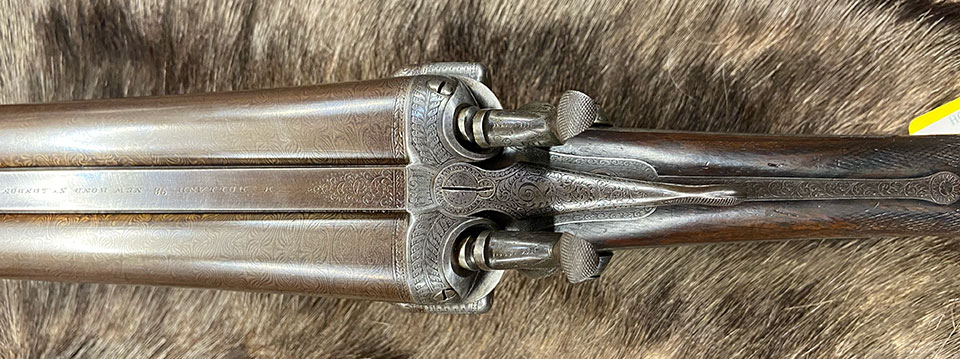
The gun is further secured by Purdey's 1865 double under-bolt, which is also operated by the top-lever and Scott spindle. This combination provides four bolting points of contact between action and barrels. As a friend observed when viewing it, "it has more bolts than anything else here but is is about the loosest gun in the room!"
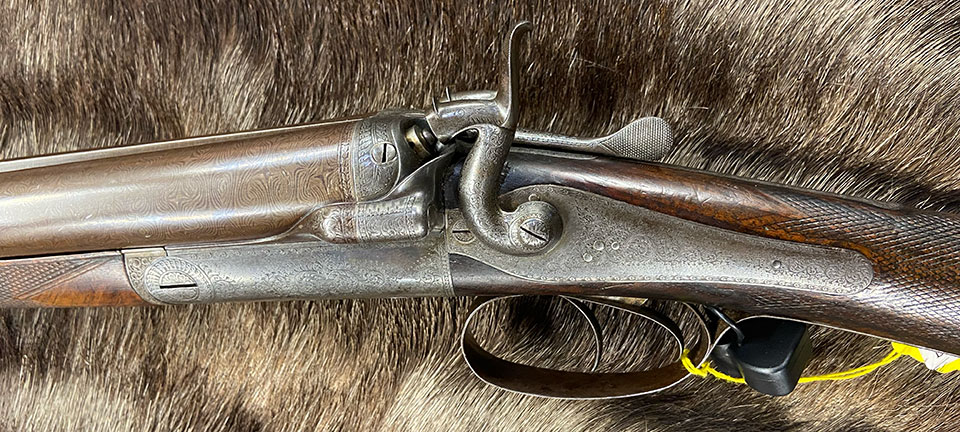
1875 was a critical year in the evolution of sporting guns in Britain. The centre-fire hammer gun reigned supreme but other ideas were gaining traction. Anson & Deeley patented their 'boxlock' in this year and it quickly started to make an impact, though many gun makers and customers preferred guns with external hammers.
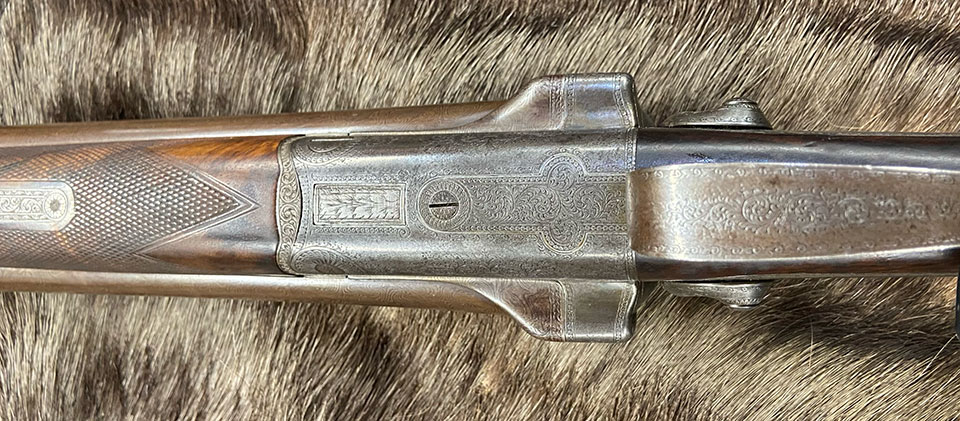
There was still a surprising amount of variance in the means used to secure barrels to actions. This may partly be explanied by a natural striving for perfection; a process leaving no stone unturned and no possible combination of ideas untried. It must also have been influenced by the desire of gunmakers to avoid using the patented actions and mechanisms of others, so as not to have to pay a royalty to the inventor for every gun made.
However, as Scott and Purdey were mutually rewarded for every gun made using a Scott spindle and a Purdey bolt in tandem the motivation for finding some other means must have been questionable. Time has taught us that a well-made game gun secured simply by a Purdey bolt alone is strong enough to do good service and that the public very much accept the top-lever and Scott spindle as a convenient means by which to operate it. It is hard to see what advantage these two extra bolts add, though they clearly make the gun less elegant and more complicated.
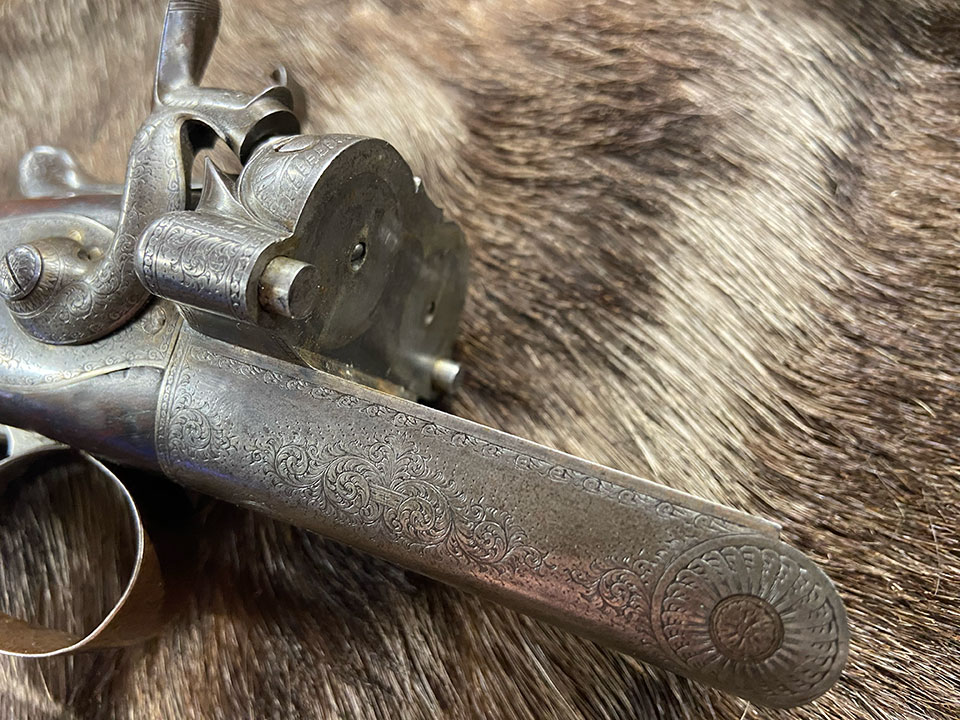
Including them requires alteration to the normal shape of the action, with the tubes containing the bolts filed into the sides, under the fences. It is also necessary to shape the barrels so as to allow for the receiving section into which the bolts lock. It might be argued that the extra width provides greater lateral stability, though side-clips would be a simpler solution.
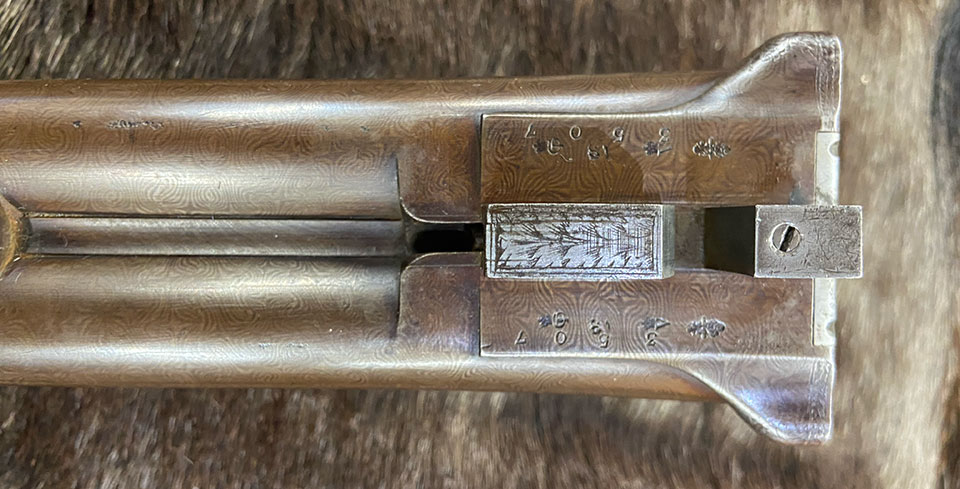
Apart from the presence of the additional bolting, the gun is a standard hammer gun of the day, with rebounding back-locks, good quality foliate scroll engraving and hammers engraved with dolphins. It is No.2 of a pair and is proof tested for black powder, with 2 1/2" chambers. The barrels are damascus and 30" long, are without choke, and bear the name of the retailler 'H.Holland. 98 New Bond St. London' on the rib.
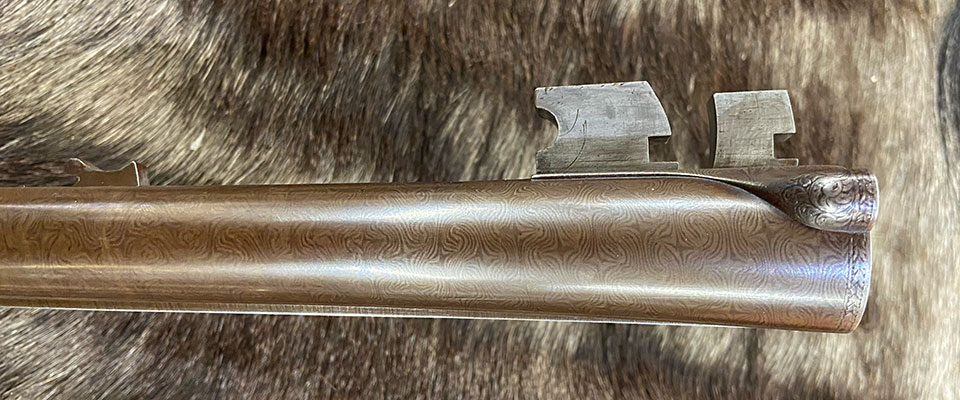
It has undergone some restoration, with the damascus barrels re-browned and the name re-engraved as it was, presumably, worn.
Guns built to this patent are uncommon and it is unsurprising that it does not appear to have been very popular. However, the idea of twin cylindrical locking bolts did not entirely go away. Anyone with a Beretta 686 ot 687 might look and notice the bolting system is not dissimilar in principle. Beretta have brought the twin bolts into the action body, negating the need for external housing. They have also altered the cylindrical bolts to conical ones but the principle remains basically the same.
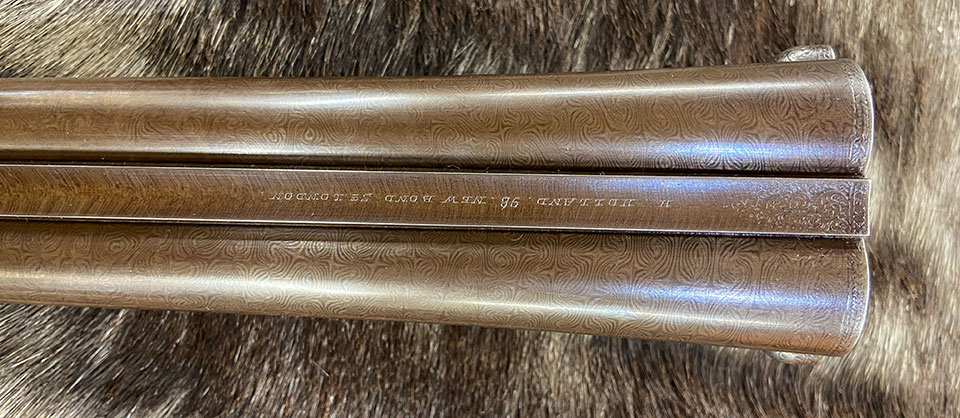
As a prospect for shooting today, there are better and simpler vintage guns from which to choose. The task of re-jointing a gun like this and ensuring each bolt has a good degree of bite to it (so it is actually doing its job) is more complex and time consuming than a conventional gun. It may be that the lateral bolts were never seriously influential, as getting all four bolts to fit tightly would render the gun very stiff and uncomfortable to use.
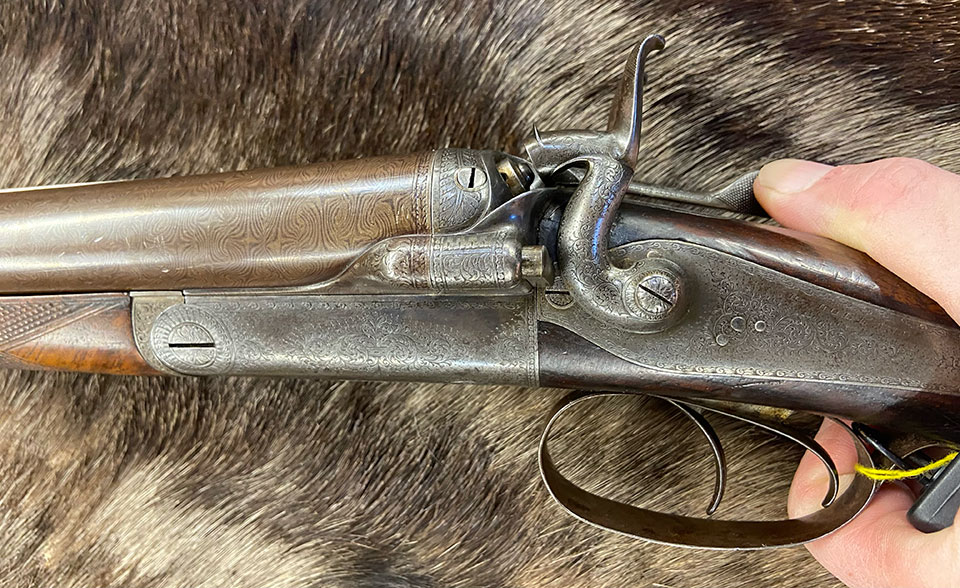
Rare examples like this, however, remain to remind us of the fertile environment for inventors that the mid 19th century provided, and of the incredible options they tested on the public in the quest to create the best.
A gun like this would be a good addition to a collection of 19th century hammer gun types, though it is not in particularly good condition (barrel walls are 18 thou'). It appeared in Holt's auction catalogue in December 2024 estimated at £2,000-£3,000.
Published by Vintage Guns Ltd on (modified )




